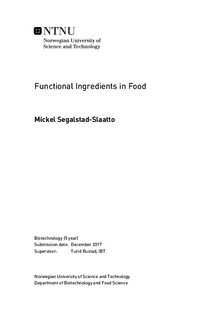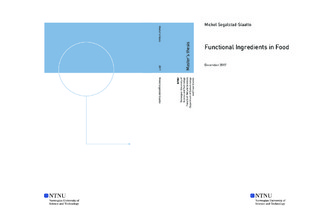| dc.description.abstract | In Norway there are more than 4.3 million laying hens that produce an average of 6 eggs every week between the age of five to twelve months. After twelve months the egg production starts to decrease, and when the hens are about 18 months old, the egg production is too low to be economically beneficial. With no suitable slaughter line for laying hens, more than 95% of them are destroyed, and some used in concrete. The UN has estimated a demand for a 70% increase in food production by 2050. Higher utilization of today s rest raw material can cover some of this demand without increasing the use of resources.
In this study, the objective was to characterize protein hydrolysate recovered by enzymatic hydrolysis of spent laying hens (HPH), and to explore new possibilities for use of the hydrolysates. Enzymatic hydrolysis is a process that can be used to extract valuable fractions such as proteins and lipids from rest raw materials. Functional properties like solubility, water holding capacity and emulsifying capacity was analysed. Total amino acid composition and free amino acids to investigate the nutritional value of HPH. The results were compared to the properties of two commercial protein powders, ScanPro T-95 and ScanPro FCP 75 to investigate the possibility of replacing existing food supplements.
With the exception of high solubility, HPH had poor functional properties compared to the commercial protein powders. The water holding capacity and emulsifying properties of HPH were very low, and HPH is not suitable for increasing the functional properties of food. Despite the poor functional properties, HPH might have an application as dietary supplement. With a high protein content, consisting of 41,60,6% essential amino acids, the nutritional properties are better compared to the commercial protein powders. HPH has a PERc value more than 1,4 times higher than the commercial protein powders, and it could therefore be used in foods where an increased protein content is more important than the addition of functional properties. With the good nutritional value, the sensory and functional properties of meatloaf with varying amounts of HPH added was analysed. The sensory analysis gave promising results for further use of HPH as a dietary supplement for human consumption. | |

